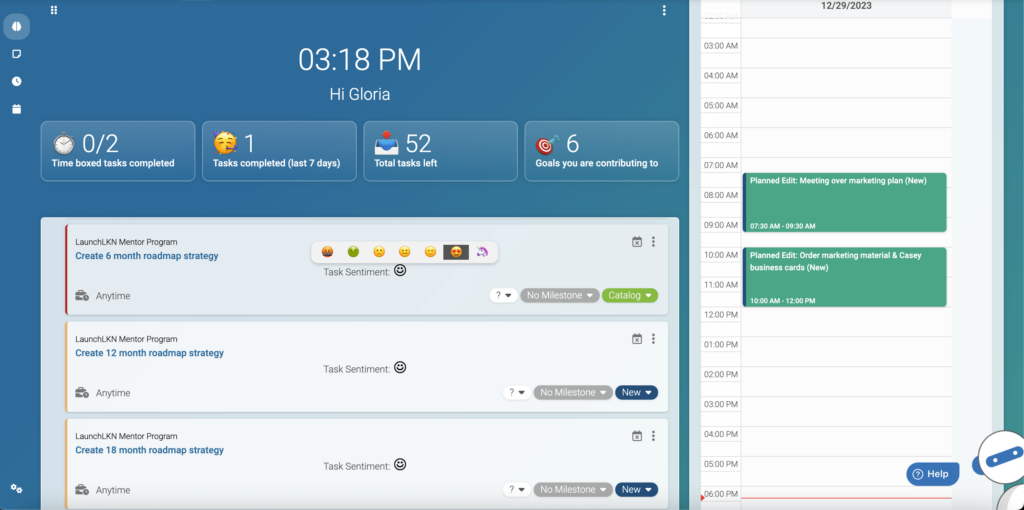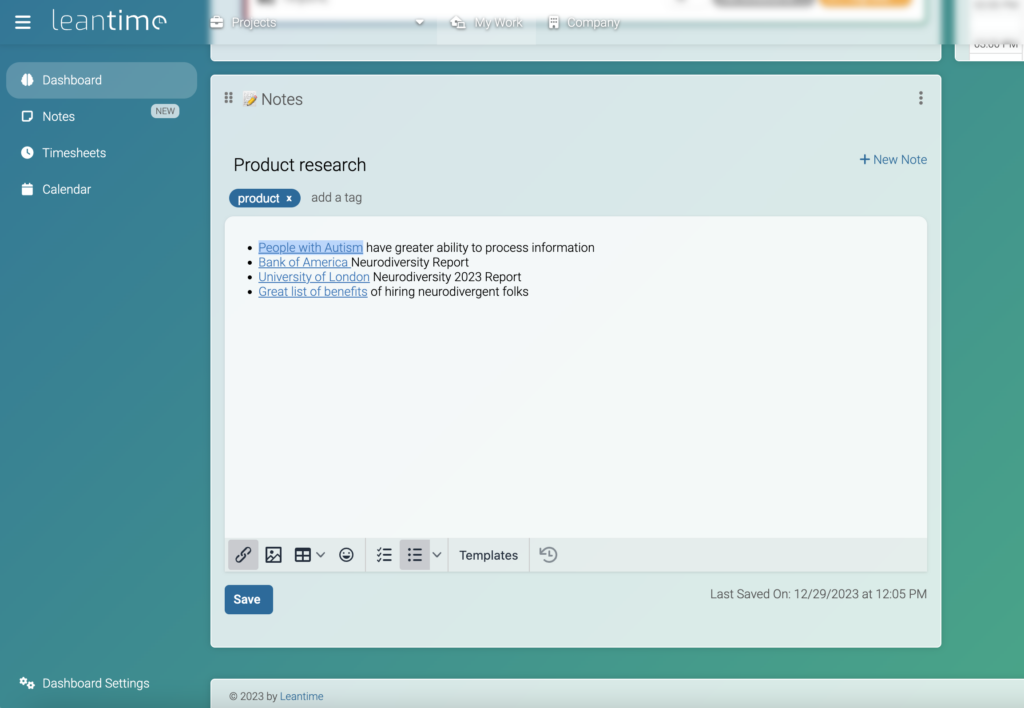Estimated reading time: 12 minutes
Embarking on the journey of being diagnosed with Attention Deficit Hyperactivity Disorder (ADHD) as an adult is a pivotal moment—one that brings forth a spectrum of emotions, challenges, and, most importantly, a pathway to understanding and better supporting this new understanding of how your brain works.
In this article, we will navigate the complexities of adult ADHD diagnosis, exploring the emotional landscape, strategies for coping, and the multitude of avenues for effective management.
Did You Know: There’s been a 400% increase in adults seeking an ADHD diagnosis since 2020.
Key Takeaways
1. Adult ADHD diagnosis may bring various emotions and challenges, but it’s a pivotal step in understanding and managing the condition.
2. Building a strong support network and seeking professional mental health assistance is critical for coping with adult ADHD symptoms and challenges.
3. Effectively managing adult ADHD includes medication, therapy, lifestyle changes, workplace strategies, time management tools, organizational techniques, and mindfulness practices.
Table of contents
- Key Takeaways
- The Revelation: Unraveling the Layers of Adult ADHD Diagnosis
- Gender Differences in ADHD: Unveiling Distinctions Between Men and Women
- Navigating the Emotional Landscape: Embracing Self-Compassion
- Building a Support Network: A Pillar for Coping
- Professional Guidance: Equipping Yourself with Tools and Techniques
- Treatment Strategies: The Multi-Faceted Approach
- Navigating the Workplace with ADHD
- Harnessing Technology: Tools for Organization and Productivity
- Mindfulness and Stress Reduction: Nurturing Mental Well-being
- A Journey, Not a Destination
- Frequently Asked Questions
The Revelation: Unraveling the Layers of Adult ADHD Diagnosis
Receiving an ADHD diagnosis in adulthood can serve as a profound revelation. You may even feel as if the dots have suddenly been connected across long-standing challenges that you’ve had your entire life and never had a name for. As a neurodevelopmental condition characterized by inattention, hyperactivity, and impulsivity.
This understanding can elicit a range of emotions, from relief and self-discovery to moments of confusion. It’s crucial to note that the diagnosis might manifest as either ADHD or Attention Deficit Disorder (ADD), the latter primarily focusing on inattention without the hyperactivity component.
I was diagnosed two years ago (December of 2021) because we started seeing symptoms in my eldest daughter. As I checked off the boxes on her assessment, a lightbulb went off, and I realized the descriptions described the majority of my life. In fact, after having children, I felt like my brain was so much more overstimulated all the time and I had already been trying to find new ways to cope.
While the diagnosis may seem overwhelming, it marks the initial stride toward a more satisfying life. I had tried everything — Acceptance and Commitment therapy, medications, mindfulness meditation.
Nothing quite addressed the overwhelmed, unsettled, and impulsive state of my brain. Understanding ADHD and its role in my life helped me to view it not as an insurmountable barrier but as a unique aspect of my identity. An aspect of my brain that warrants particular attention and care.
What I found the diagnosis meant was that so many of the things that the world often said was wrong for me to do — were things I could turn into positives as I learned to better support myself.
As an example, my incessant need for novelty and learning has enabled me to move my career from Nursing to Photographer, Floor Loom Weaver, Fabric artist, Alpaca farmer, Startup Product Manager, and so many more things. Yet what did I hear from the world? “You’re so inconsistent. You have too much energy and can’t stick to anything. You have so many new hobbies.”
NeuroWild is a neurodivergent advocate who has explained the extremes that ADHD and Autism are known for are states of dysregulation. Now that I know and can address this, I know that certain things cause me to tip over the edge into the extremes of my ADHD. As a result, I know where I can set boundaries and where I need to push through to get to what I need to accomplish.
However, the diagnosis isn’t entirely daunting. Grasping the diagnosis and its implications is essential. Being diagnosed with ADHD doesn’t mean you’re flawed. It’s a different way your brain functions. Embracing self-compassion and acceptance is crucial during this time. It’s important to remember that you’re not alone in this journey.
There are many adults out there, just like you, navigating life with ADHD. The experience of adult ADHD symptoms varies significantly between individuals, emphasizing the importance of recognizing and embracing these differences.
Gender Differences in ADHD: Unveiling Distinctions Between Men and Women
ADHD, while often associated with stereotypical hyperactivity, impulsivity, and inattention, is complex disorder that manifests differently in men and women. In males, ADHD symptoms may align more closely with the conventional understanding, featuring noticeable hyperactivity and impulsive behavior.
However, in females, ADHD tends to be characterized by subtler signs, such as internal restlessness, difficulties with organization, and heightened emotional sensitivity.
Women with ADHD often face challenges in areas like time management and organization, leading to a higher likelihood of internalized struggles. Moreover, girls with ADHD are more likely to be diagnosed later than boys, as their symptoms may not have met the diagnostic criteria of our youth. I saw this personally when my brother was diagnosed, and I was not. He was the child that was bouncy off the walls, and I was not.
Did You Know: Research supports that the risk factors for ADHD are 76%-90% genetic.
Recognizing these gender-specific nuances is crucial for accurate diagnosis and effective support, ensuring that individuals, regardless of gender, receive tailored interventions that address their unique experiences with ADHD.
Overview of the differing symptoms
Presentation of Symptoms
Men with ADHD often exhibit more overt symptoms such as hyperactivity and impulsive behavior, conforming to traditional stereotypes. In contrast, women tend to display subtler signs, including internal restlessness, disorganization, and challenges with time management.
Diagnosis Timing
Girls and women with ADHD are frequently diagnosed later than their male counterparts. The more covert symptoms in females may result in overlooked or misattributed challenges, leading to delayed recognition and diagnosis.
Coping Mechanisms
Men may adopt external coping mechanisms, such as impulsive decision-making or overt expressions of hyperactivity. Women, on the other hand, might develop internal coping strategies, such as perfectionism or people-pleasing, to navigate the challenges associated with ADHD.
Comorbidity Patterns
Women with ADHD frequently experience either comorbid conditions or misdiagnosis of anxiety and depression. The internalized nature of their symptoms may contribute to mental health challenges, highlighting the importance of considering coexisting conditions in the diagnostic process and treatment planning.
Navigating the Emotional Landscape: Embracing Self-Compassion
It can be hard to reframe yourself in this new outlook while finding the most effective treatment. It’s important to give yourself the space to feel what you need and then start finding the social support, environmental factors, and brain differences that will support finding your best daily functioning self.
Building a Support Network: A Pillar for Coping
A robust support network is a potent strategy for managing adult ADHD. This network, which may include family members, friends, and fellow adults with ADHD, provides a safe space to share experiences, triumphs, and challenges.
Support groups foster a sense of community and belonging, offering invaluable connections that transcend the journey of ADHD. The online community on LinkedIn, Facebook, Reddit, and even Tiktok is vast and understanding.
Professional Guidance: Equipping Yourself with Tools and Techniques
Coupled with a strong support network, pursuing assistance from a mental health professional holds equal significance. Mental health professionals specialize in diagnosing and treating mental health problems and conditions, including mental disorders like ADHD, mood swings, and other mental health conditions. They can provide valuable insight into your mental health condition and equip you with tools and techniques to manage symptoms.
Acceptance and Commitment Therapy for ADHD
Acceptance and Commitment Therapy (ACT) is a psychotherapeutic approach that revolves around fostering psychological flexibility—the ability to be open, adapt, and commit to values-driven actions in the presence of challenging thoughts and emotions.
Developed within the context of cognitive-behavioral therapy, ACT goes beyond symptom reduction by emphasizing acceptance of internal experiences and the pursuit of a meaningful life. In ACT, individuals learn to accept their thoughts and feelings without judgment, recognizing that avoidance and control strategies may hinder personal growth.
The therapy encourages clients to identify their core values and commit to actions aligned with those values, promoting a richer, more fulfilling life. ACT has proven effective in treating a variety of mental health conditions, including anxiety, depression, and chronic pain, offering a holistic and empowering approach to emotional well-being.
ACT offers numerous benefits that contribute to its effectiveness in promoting psychological well-being and personal growth. Here is a list of key advantages associated with ACT:
Enhanced Psychological Flexibility
ACT supports adapting and responding effectively to life’s challenges, fostering resilience and mental agility.
Mindfulness Integration
ACT incorporates mindfulness techniques, promoting present-moment awareness and helping individuals observe their thoughts and feelings without attachment or judgment.
Enhanced Psychological Flexibility
ACT supports adapting and responding effectively to life’s challenges, fostering resilience and mental agility.
Mindfulness Integration
ACT incorporates mindfulness techniques, promoting present-moment awareness and helping individuals observe their thoughts and feelings without attachment or judgment.
Reduction in Symptom Severity
Research indicates that ACT is effective in reducing symptoms associated with various mental health conditions, including anxiety, depression, and stress-related disorders.
Values Clarification
ACT guides individuals in identifying and clarifying their core values, fostering a sense of purpose and direction in life.
Reduced Experiential Avoidance
ACT emphasizes facing and accepting difficult emotions and thoughts rather than avoiding or suppressing them, leading to decreased experiential avoidance.
Treatment Strategies: The Multi-Faceted Approach
ADHD treatment commonly melds medication, therapy, and lifestyle modifications. Medication can help manage core symptoms of ADHD, but it’s not the only solution. Therapy, particularly cognitive-behavioral therapy, can help you develop skills to cope with symptoms and challenges.
Effective management of adult ADHD often involves a multi-faceted approach encompassing medication, therapy, and lifestyle modifications. Additional activities will include lifestyle adjustments, including maintaining a balanced diet, ensuring adequate sleep, and engaging in regular physical activity, which are all important in the holistic management of adult ADHD.
Navigating the Workplace with ADHD
Workplace challenges like trouble staying focused, organized, and managing time effectively may uniquely affect adults with ADHD. But with the right strategies, these challenges can be addressed. One such strategy is seeking accommodations in the workplace. This may involve having a quiet workspace or using noise-canceling headphones to minimize distractions.
Open communication with supervisors and colleagues is also key. It can help create an understanding and supportive work environment. But remember, disclosure of your ADHD is a personal choice and should be done only when you feel comfortable and safe.
Read More: Things to do When You Can’t Focus on Work + Tips If You Have ADHD
Time management can be particularly challenging for adults with ADHD. Using tools like digital calendars, to-do lists, and reminders can be helpful. It’s also important to prioritize tasks, breaking big tasks into manageable steps to reduce the feeling of being overwhelmed.
Harnessing Technology: Tools for Organization and Productivity
The integration of technology serves as a beneficial ally for adults with ADHD. Various apps and software designed to improve focus and productivity can aid in managing daily tasks, from grocery shopping to tracking habits and managing appointments. These tools offer practical solutions to stay organized, enhancing organization and productivity.
Establishing a favorable work environment is another vital step. This could mean:
- Organizing your workspace to minimize distractions
- Using color coding to manage files and tasks
- Setting specific periods for checking emails and making phone calls
There are numerous apps and software designed to improve focus and productivity. These tools can help manage daily tasks, including:
- Grocery shopping
- Paying bills
- Setting reminders
- Tracking habits
- Managing appointments
Using Leantime as a Work Management Tool
Leantime is a work management tool built specifically to support neurodivergent folks whether they are organizing their businesses, personal lives, or in the workplace. Leantime offers to do list views and traditional organization and differs from other tools with the focus on motivational psychology, simplicity, and in building features to boost dopamine.

Other ADHD-friendly features of Leantime include a personalized dashboard with Notes, rating how you feel about tasks (privately), AI prioritizing tasks based on how you feel about important tasks and science, time blocking, and progress dashboard.

Mindfulness and Stress Reduction: Nurturing Mental Well-being
Mindfulness and stress-reduction techniques, including practices like yoga and meditation, offer immense benefits for adults with ADHD. These practices help reduce stress levels, improve attention span, and enhance self-esteem, contributing to improved overall well-being. These techniques can also enhance self-esteem, improving relationships and overall quality of life.
A Journey, Not a Destination
The journey of managing ADHD in adulthood is dynamic, encompassing understanding the diagnosis, embracing self-compassion, and building a strong support network. Seeking professional help and employing a multi-faceted approach to treatment are crucial steps toward thriving despite ADHD.
Remember, ADHD is a unique aspect of your identity, not a defining characteristic. With the right strategies and support, you can navigate the complexities of adult ADHD and create a new outlook for yourself.
Frequently Asked Questions
You can get officially diagnosed with ADHD through a detailed assessment by a specialist, which may include a physical examination, psychological tests, and interviews to rule out other possible causes for the symptoms and assess the level of impairment. In some instances, this can be done by your primary care. In many areas this is now done by ADHD specialists.
Yes, it is worth getting an ADHD diagnosis as it can help make sense of your life and opens up treatment options that can greatly improve your quality of life. You can discuss treatment options with your doctor to find the best approach for you.
Yes, it is possible to develop ADHD in adulthood and it may present differently from childhood-onset ADHD.
ADHD in adult females can present as overwhelming feelings, psychological distress, low self-esteem, chronic stress, and a sense of chaos. Symptoms may include inattentiveness, forgetfulness, and difficulty completing tasks, with inattentive presentation being more common in women than in men.
Receiving a diagnosis of ADHD in adulthood means acknowledging that the challenges may be linked to ADHD, a condition characterized by inattention, hyperactivity, and impulsivity that can significantly impact adult life.



